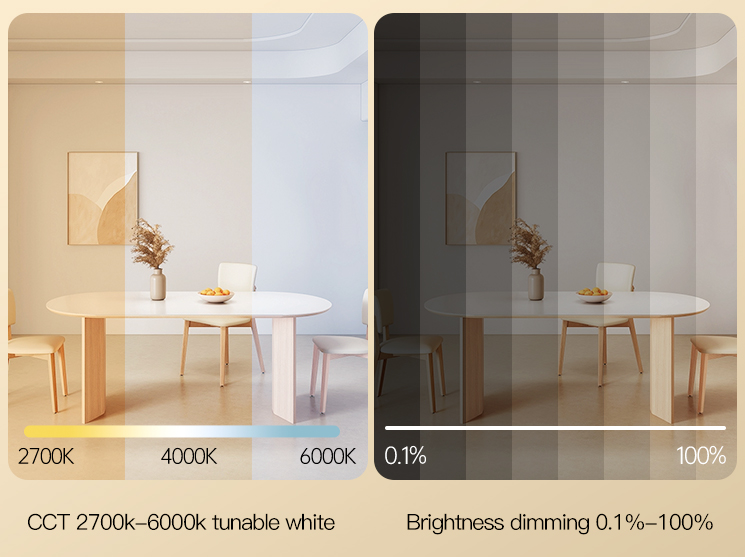Dimming Method of LED Luminaires - TRIAC & 0-10V
LED dimming means that the brightness, color temperature, and even color of LED lamps are changeable. Only a dimming lamp can slow start and slow off, change the color temperatures and the brightness according to the different scenarios. And the light switching can transition smoothly. Dimmable lighting systems are an essential part of smart home systems.
There are mainly four types of dimming protocols for LED source lights in the market, TRIAC, 0/1-10V, DALI, and DMX.
1) TRIAC dimming (some also call it phase-cut):
TRIAC dimming includes leading-edge dimming and trailing-edge dimming.
The principle of leading edge dimming is to change the input voltage in the circuit through the TRIAC signal. The switch in the TRIAC appliance can adjust the internal resistance value so that the sine wave of the input voltage can be changed through the TRIAC, thereby changing the effecting value of the voltage and adjusting the brightness of the lamp. This dimming method is a lower cost, compatible with existing circuits, does not need rewiring, and has the advantages of high adjustment accuracy, high efficiency, small size, lightweight, and easy long-distance operation. It has a very high market share.
The principle of trailing-edge dimming is to turn on immediately after the half-wave of the AC voltage starts and turn off immediately when the half-wave voltage reaches the set value to achieve dimming. Compared with leading-edge dimming, trailing-edge dimming is better matching and stability work with electronic components because there is no minimum maintenance current requirement.
Nowadays in the LED lighting market, power supplies are commonly compatible both methods of leading-edge and trailing-edge.
2) 0/1-10V dimming:
0-10V dimming is an analog dimming method. It is to control the output current of the power supply by changing the voltage of 0-10V to achieve dimming.
When adjusting the 0-10V dimmer to 0V, the current drops to 0, and the brightness of the light is off (with a switch function). When setting the 0-10V dimmer to 10V, the output current will reach 100%, and the brightness will also be 100%.
The principle of 1-10V and 0-10V is the same technologically. There is only one difference. When turning on or off the lamp, the required voltage is different. 0-10V dimming means that when the voltage is lower than 0.3v, the brightness is 0, but when the voltage is 0v, the input terminal is in standby mode. 1-10V means the lamp brightness is 0 when the voltage is lower than 0.6V.
The advantages of the 0-10V dimming method are simple application, good compatibility, high precision, and a smooth dimming curve. The disadvantage is that the wiring is complicated, the voltage drop will affect the actual percentage value of the dimming, and multiple wires can cause a voltage drop when installing many lights and causing different lighting brightness.
Post time: Jul-31-2023

